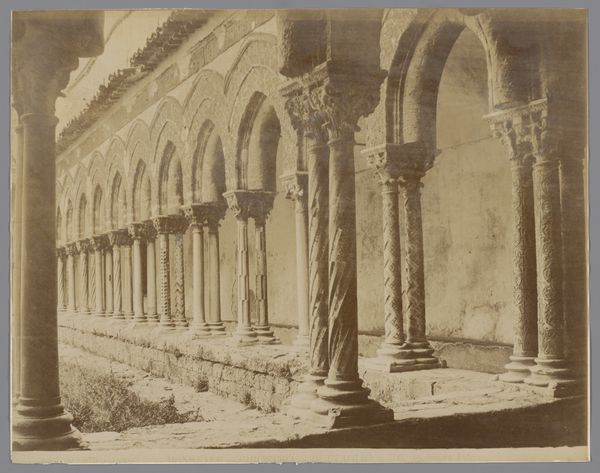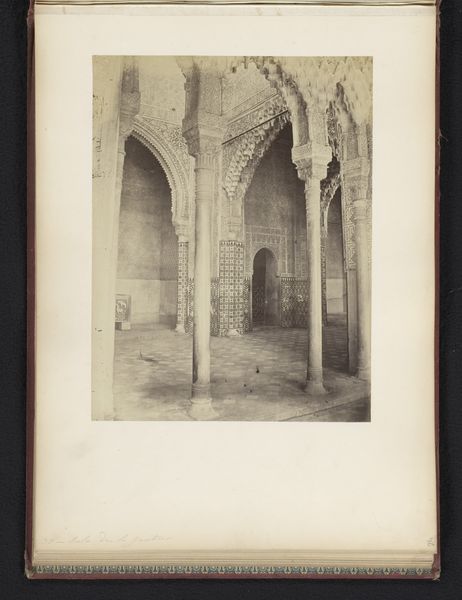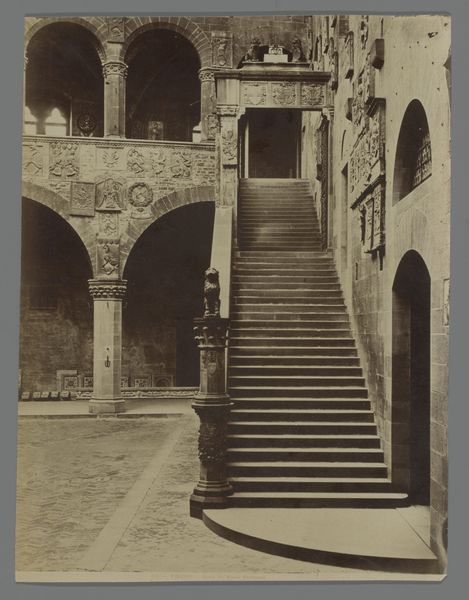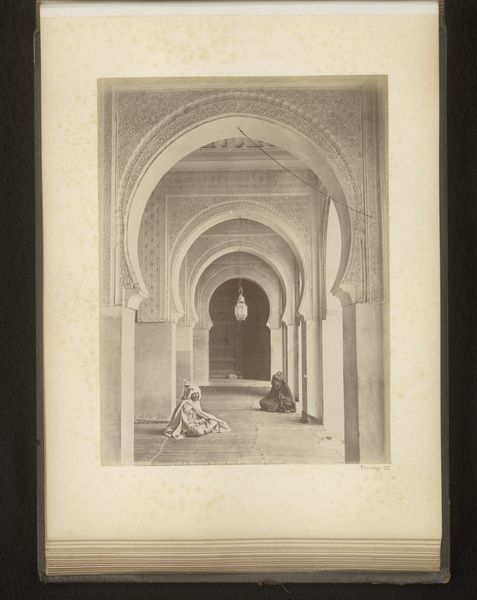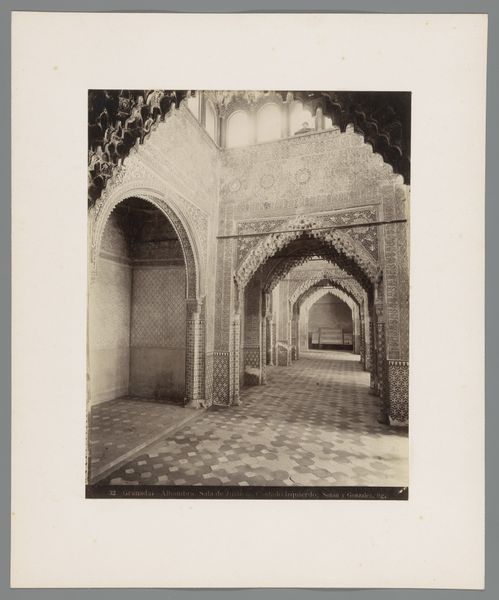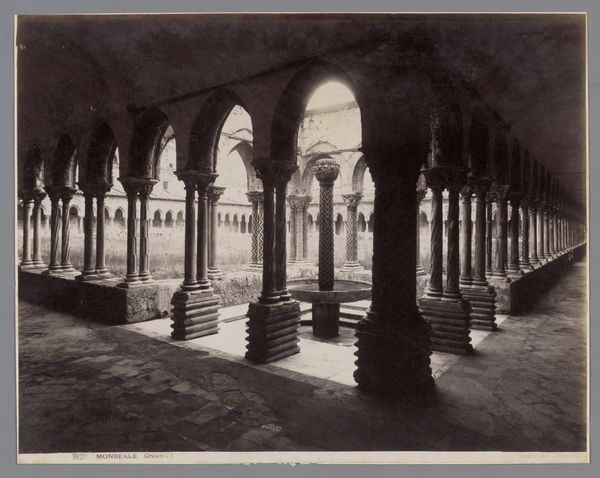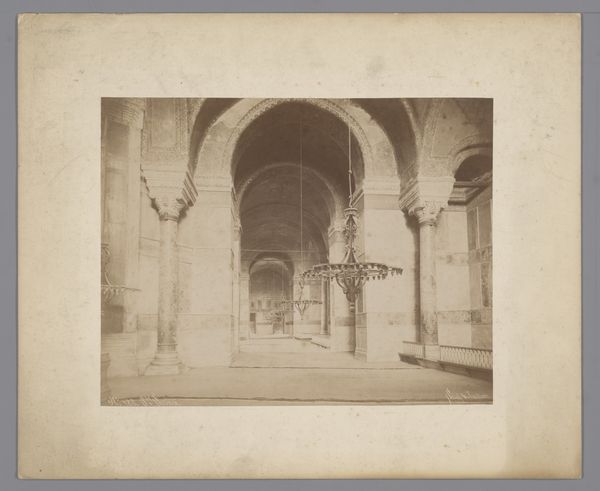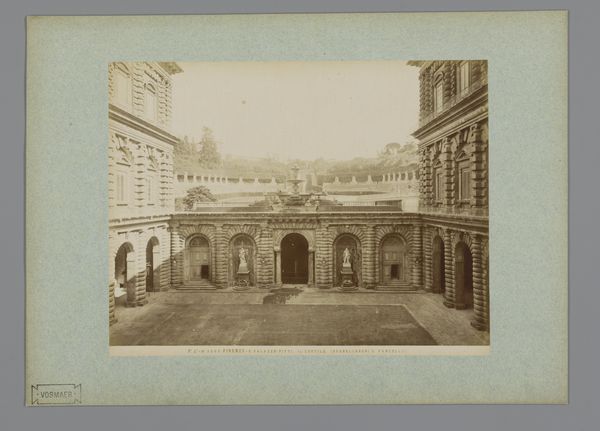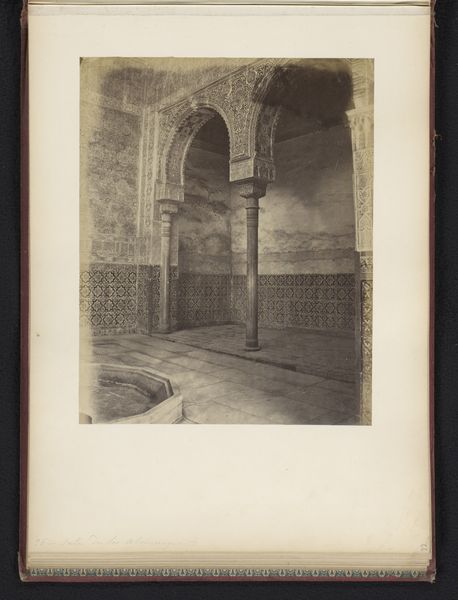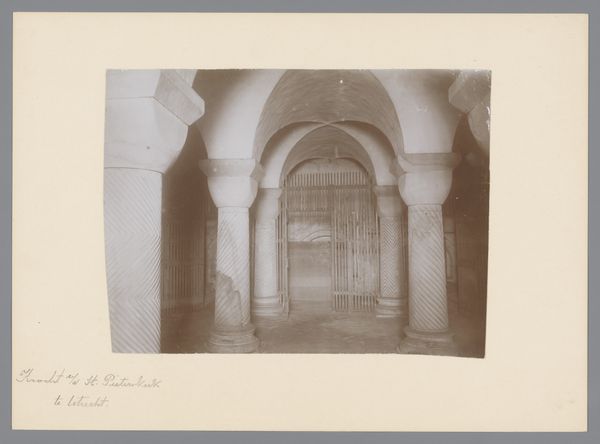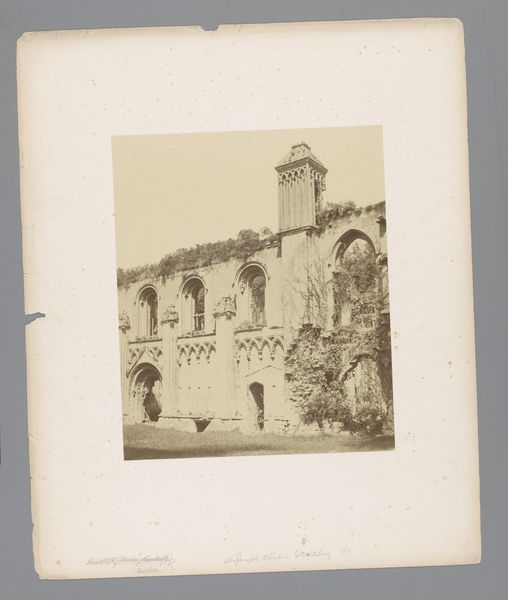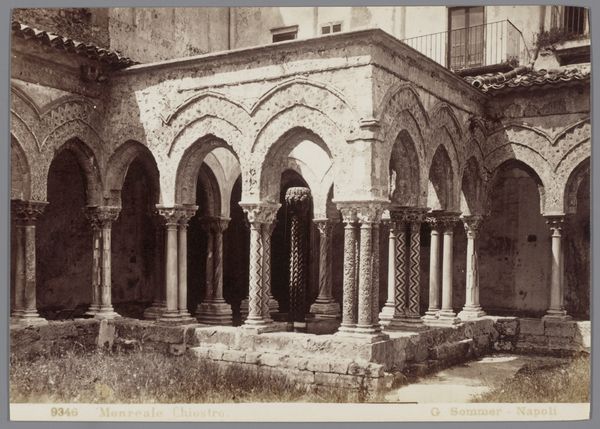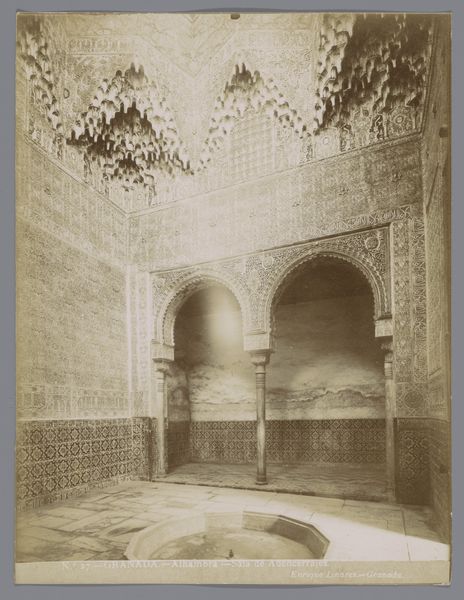
photography
#
aged paper
#
toned paper
#
pale palette
#
muted colour palette
#
landscape
#
photography
#
19th century
#
islamic-art
Dimensions: height 205 mm, width 265 mm
Copyright: Rijks Museum: Open Domain
Curator: This is a photograph titled "Interieur van de Ibn Toeloenmoskee te Caïro," or "Interior of the Ibn Tulun Mosque in Cairo," believed to have been captured sometime between 1875 and 1900. The photographer, unfortunately, remains anonymous. Editor: It's remarkable, isn't it? The receding arches draw you into the photograph, emphasizing the mosque's immense scale and the delicate play of light and shadow. The tones, even in this muted palette, create a surprisingly dramatic mood. Curator: Indeed. These kinds of architectural studies gained traction during this period as European and American interests in the Middle East expanded, shaping popular understanding through carefully constructed images of these historic sites. Editor: Notice how the arches are not merely structural but also bear inscriptions, hinting at deeper layers of meaning. And consider the very deliberate use of the photographic medium itself. Curator: Absolutely, the choice of photography speaks volumes about accessibility and documentation. These images often functioned as portable souvenirs or ethnographic records, circulating among particular audiences, solidifying colonial-era perceptions. Editor: From a formal perspective, the photographer captured more than just architecture, however; the eye is constantly drawn back into space; there is a real conversation of positive and negative shapes at play that is very arresting. The arches create such an evocative rhythm through the space, right? Curator: Precisely. This rhythm is essential. When viewed through the lens of post-colonialism, it becomes apparent that this approach served to aestheticize and thereby normalize these sites, catering to European artistic sensibilities and simultaneously diminishing the building's significance. Editor: It's easy to get lost in its elegance—the textures, the light—without reflecting on the context from which this view emerges. Thank you, that gives me so much more to think about with this work. Curator: My pleasure. Let’s move to the next exhibit.
Comments
No comments
Be the first to comment and join the conversation on the ultimate creative platform.
